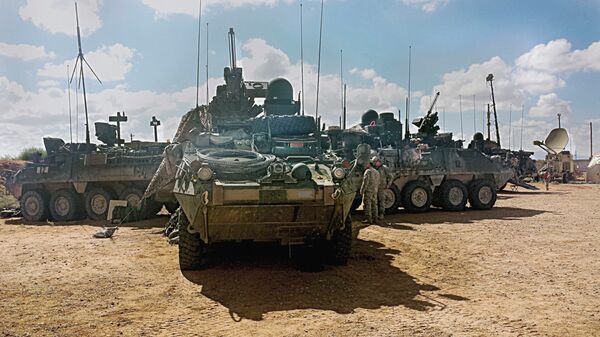
US Army Stryker vehicles equipped with mobile, high-bandwidth satellite connectivity WIN-T Inc 2 networked systems. (US Army)
The US Department of Defense (DoD) research and engineering (R&E) directorate is doubling down on research and development efforts, exploring spectrum-sharing strategies designed to expand mobile 5G communications capabilities across the US armed forces.
5G spectrum-sharing initiatives will be one of several key areas of investment and development designed to further expedite integration of 5G communications, said Amanda Toman, acting principal director for 5G with the office of the Under Secretary of Defense for Research and Engineering (OUSD R&E). “Understanding that spectrum is going to be a valuable resource into the future ... [and] understanding how things can coexist in that spectrum-constrained environment is going to be a huge focus of the [5G] initiative,” she said during an event sponsored by the Potomac Officers Club.
“This is an area where we're looking ... to develop some optimisation tools for the 5G network. So, understanding [applications like] network slicing, spectrum understanding, software virtualisation for the network [applications], and taking a hard look at which of these concepts work and which we're going to move forward with into the out-years,” Toman said. “Another piece of this is also Open-RAN or Open-Radio Access networks. We've really made a concerted effort to award to vendors that provide around those solutions ... [and] really develop those capabilities [to] push that technology forward,” she added.
The notion of spectrum sharing for 5G, also known as Dynamic Spectrum Sharing (DSS), is to enable multiple types of mobile networks to operate in a single section of bandwidth. In civilian applications, 4G LTE and 5G networks would be able to receive and transmit data across the same range of spectrum bandwidth, aided by DSS solutions.
Looking to read the full article?
Gain unlimited access to Janes news and more...



